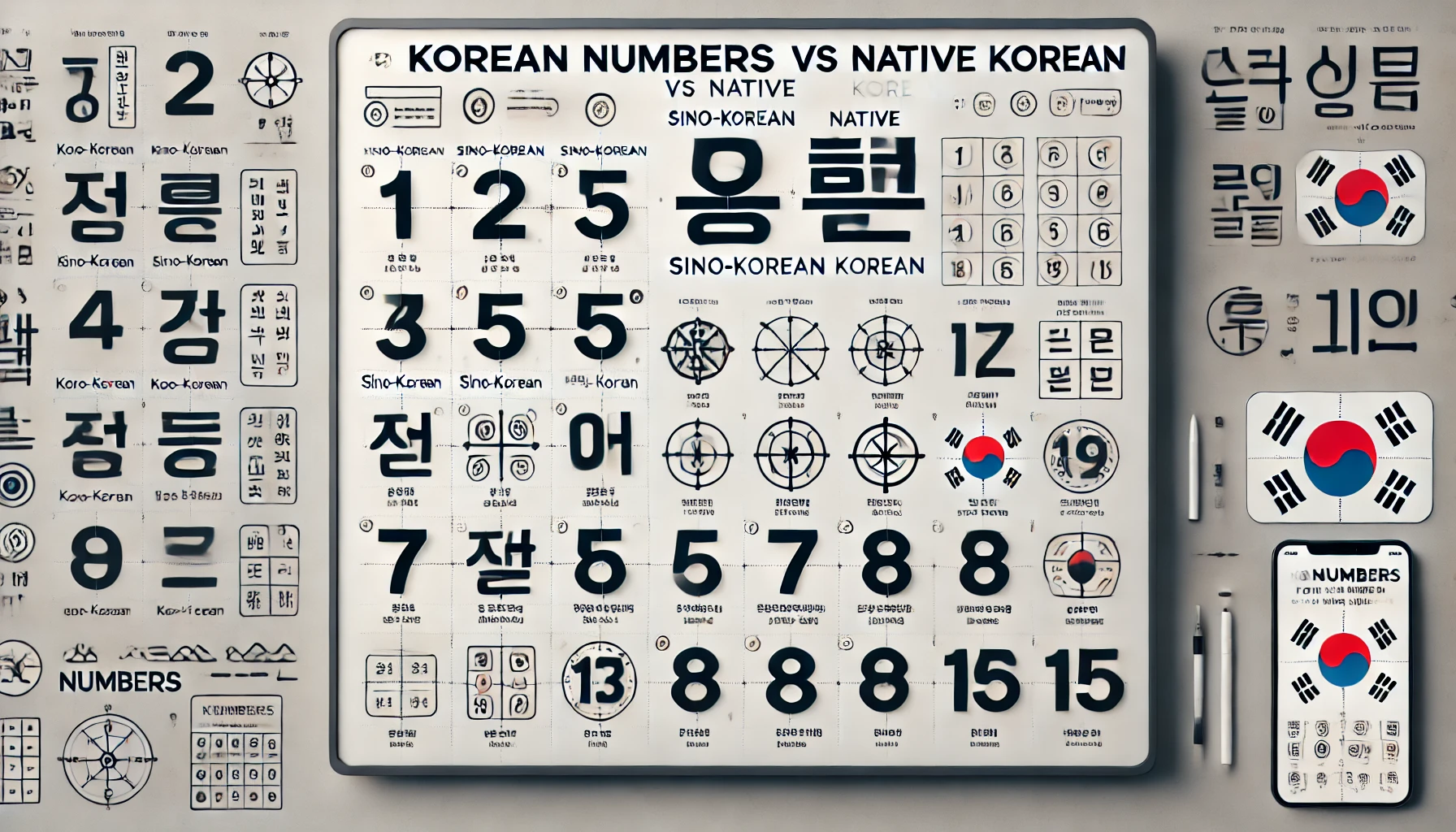
Hello there, my wonderful reading buddies! I’m beyond excited to share my personal experiences with Korean numbers and hopefully spark your curiosity about this fascinating language. It's totally normal to feel a bit lost at first, especially since Korean relies on two main number systems—Sino-Korean and native Korean. But hey, don’t sweat it: with a little practice, you’ll see how smoothly they fit into everyday life.
Getting Comfortable with Sino-Korean Numbers
I remember the first time I tried to read phone numbers in Korean. I was like, “Wait, which system do I use again?” Turns out, phone numbers mostly rely on Sino-Korean numbers, which is good news because this system is pretty straightforward. Check out some common Sino-Korean numbers below:
일 (il) – 1
이 (i) – 2
삼 (sam) – 3
사 (sa) – 4
오 (o) – 5
육 (yuk) – 6
칠 (chil) – 7
팔 (pal) – 8
구 (gu) – 9
십 (sip) – 10
I love how simple the pattern is once you get the hang of it. For example, 11 is 십일 (sip il), 25 is 이십오 (i sip o), and so on. Basically, you mix the base number (이 for 2, 삼 for 3, etc.) with the word 십 (sip) and then tack on the final digit. Easy-peasy!
A Quick Peek at Native Korean Numbers
When telling someone your age or asking for the time, you switch to native Korean numbers. These can be a bit more quirky, but they’re plenty of fun. For instance: 1) 하나 (hana) – 1 2) 둘 (dul) – 2 3) 셋 (set) – 3
…and so on. If you’re confused, don’t stress—it’s totally normal to mix them up at first.
Pro Tip: Try grouping numbers in sets. Seriously, grouping them in, say, blocks of ten can help the memorizing process!
Underline your progress by focusing on small chunks.
Practice reading random signs or license plates while on the bus.
Highlight the numbers you see most often.
Experiment with counting your groceries in Korean.
Really pay attention to the sounds, even if you make a few slip-ups.
Fascinating Tidbits to Keep You Going
Did you know that the number 1004 (천사, cheonsa) sounds like “angel” in Korean? People often use 1004 as a cute way to say they're sending warm wishes. On the flip side, the number 4 tends to be unlucky (or at least spooky) because it sounds like “death” in Chinese. And if you’re looking for a lucky digit, consider 7—it’s seen as a sign of good fortune.
Here are two ways I like to stay motivated: 1. Connect numbers to daily life: I try to read the clock out loud in Korean whenever possible. 2. Make it fun: I sometimes watch K-pop videos and look for hidden number references (you’d be surprised how often they pop up).
You might stumble a few times, but that’s totally fine—mistakes help you learn faster! I’ve definitely messed up phone numbers in Korean more than once, and it’s no biggie. Each slip merely underlines an opportunity to remember the correct form next time.
Wrapping It All Up
Learning Korean numbers is a journey full of tiny victories. Whenever you successfully say your phone number or age in Korean, pat yourself on the back and keep on going. It’s not about being perfect; it’s about letting your curiosity lead the way. Keep practicing, and pretty soon, you’ll be counting, chatting, and having a blast with Korean numbers.
Good luck, godspeed, and 화이팅 (hwa-i-ting)! That’s “best of luck” in Korean, and I’m sending you all the angel-like support I can!